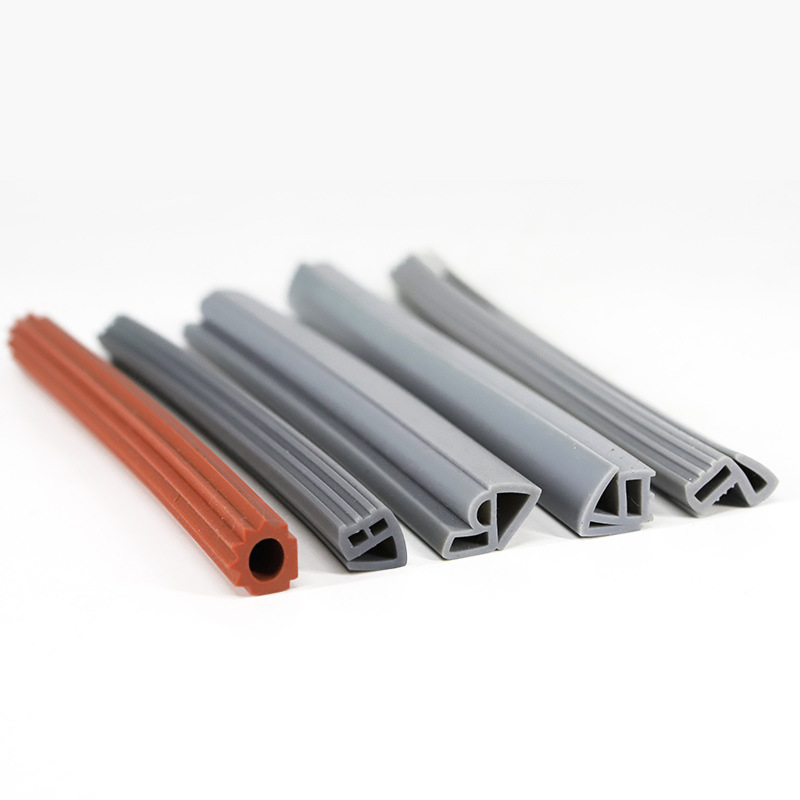What is a Sealing Strip?
- A sealing strip, which is sometimes referred to as a weather-strip or weather seal, is a flexible material that is used to cover gaps or joints in a variety of applications, usually between two surfaces like a door and its frame, a window and its sill, or two adjacent panels of a car or boat. A strip’s primary function is to close gaps and joints so that no air, water, dust, or sound can enter or exit, enhancing overall comfort and increasing energy efficiency.
- Sealing strips can be self-adhesive or need mechanical attaching, depending on the use. They can be constructed of different materials, such as silicone, rubber, and foam, in various sizes and forms.
The Use and Characteristics of Sealing Strips:
The Sealing strip creates a tight barrier between two surfaces, preventing the entry of dust, moisture, air, or other undesirable elements. They are often used in many applications, including doors, windows, roofs, and automobile components. Several variables, such as the materials used, the design, and the application, affect the characteristics and effectiveness of sealing strips. These are a few of the qualities and performance traits of sealing strips:
- Material:
Depending on the purpose, several materials can be utilized for sealing strips. Foam, silicone, and rubber are some typical materials. The atmosphere, temperature, and needed chemical resistance are only a few variables that will influence the material choice.
- Density:
Their density influences the performance of the sealing strip. Better sealing durability and performance may come from a greater density.
- Compression set:
A compression set is a measurement of a material’s ability to keep its shape and function as a sealant following compression. A low compression set is preferred for sealing strips to keep their sealing abilities over time.
- Temperature range:
Sealing strips need to be able to resist wide temperature variations without losing their ability to seal. The materials utilized and the application will determine the temperature range.
- Chemical resistance:
Sealing strips may be exposed to a variety of chemicals, and how well they work in these environments is heavily influenced by this.
- Stretchable power:
The highest pressure a substantial can endure before a violation is identified as its stretchable power. A sealing strip that has a higher tensile strength will be more robust and long-lasting.
- Durability:
Sealing strips’ long-term performance depends on how durable they are. The strength of sealing strips might vary depending on the material used as well as the design and construction.
- Adhesion:
Sealing strips need to adhere well to the surfaces they are sealing. The adhesive strength can change depending on the materials used and the strip’s design. The composition, design, and usage of the sealing strips and other aspects affect their characteristics and effectiveness. To achieve the best sealing performance and longevity, selecting the appropriate sealing strip for the specified application is crucial.
What Purposes Do Sealing Strips Serve?
Sealing strips are used to close gaps and holes between two surfaces so that no air, water, dust, or noise may enter. These strips primarily consist of rubber, silicone, or foam, and they are available in a range of diameters and forms to accommodate various uses. Sealing strips have a variety of purposes, such as:
- Doors and Windows:
Sealing strips are frequently used around doors and windows to stop draughts, water intrusion, and noise pollution.

- Automotive:
A sealing strip is used in cars to block noise, water, and air from entering the passenger area.
- Appliances:
Sealing strips are used in refrigerators, freezers, and other appliances to keep air and moisture out.
- Construction:
In the building industry, sealing strips are used to close gaps around pipelines, electrical conduits, and other structural elements. Sealing strips are utilized in industrial settings to stop leaks and provide insulation from heat and cold.
Who produces Sealing strips of the highest standard?
- A reputable manufacturer of excellent sealing strips is BRT. We provide a wide range of sealing strips to meet your needs. A group of experts who are ready to help you find the best solution for your application supports our products. Contact us to learn more about our products and how we can help you accomplish your goals. BRT offers a wide range of products, is committed to quality, and has a staff of experts that are passionate about helping you find the best solution for your needs.
- BRT has a solid reputation in the industry for manufacturing outstanding sealing strips that are resilient in various circumstances. A large selection of products, a commitment to quality, and a team of experts that are committed to helping you discover the best solution for your needs.
What is the sealing strip manufacturing process?
- Sealing Strip is produced by BRT, which sells high-quality products at reasonable prices. If you need to seal pipes, the extruded sealing strip is superior to traditional pipe sealers. The ribbon is created by heating plastic, which is then molded into a seal for the pipe. This seal prevents liquids like water, gas, or other liquids from entering the line and causing harm.
- The sealing strip can also be used to fix or seal leaks. Due to the ribbon’s flexibility, it may conform to the leak and form a seal, preventing any liquids from entering the line, including water, gas, or other liquids.
Conclusion:
The sealing strips prevent water from seeping through and harming the surface; they seal by firmly adhering to it. The top maker of sealing strip is BRT. Engineers can produce drawings and proofs in accordance with customer requirements since we have a 20-person technical staff that is highly trained. OEM and ODM are accepted. Our business has sophisticated production facilities and great technological capabilities.



